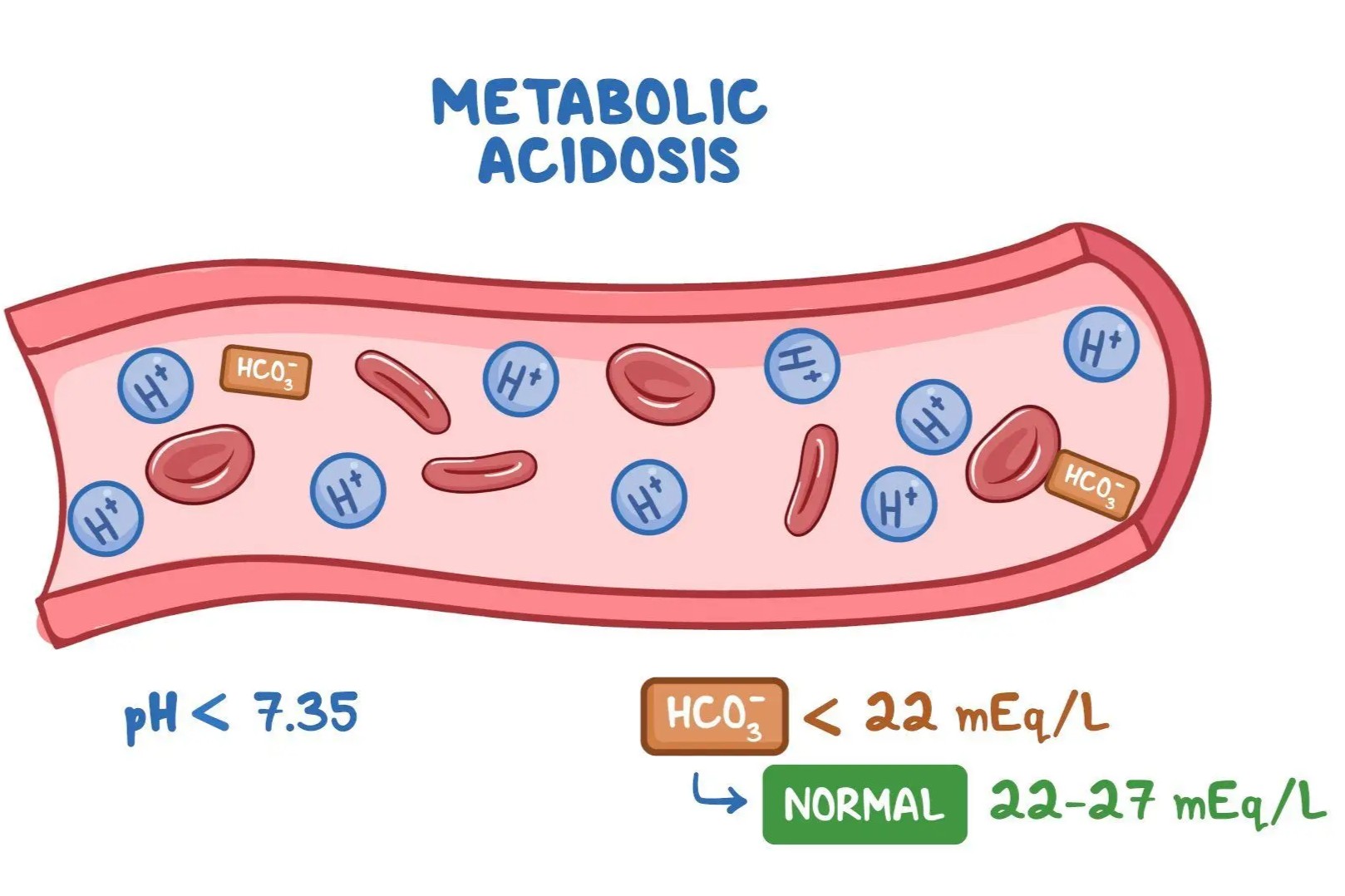
Acidosis is a condition where the body accumulates too much acid, or loses too much base, causing the blood's pH to drop below the normal range. This imbalance can lead to various health issues, affecting organs and bodily functions. Acidosis can be classified into two main types: metabolic acidosis and respiratory acidosis. Metabolic acidosis occurs when the body produces too much acid or the kidneys fail to remove enough acid. Respiratory acidosis happens when the lungs cannot remove enough carbon dioxide. Understanding the causes, symptoms, and treatments of acidosis is crucial for maintaining overall health. Let's dive into 27 essential facts about this condition to help you stay informed and proactive.
What is Acidosis?
Acidosis occurs when the body’s fluids contain too much acid. This imbalance can disrupt bodily functions and lead to various health issues. Let's explore some intriguing facts about this condition.
-
Two Main Types: Acidosis can be classified into two main types: metabolic and respiratory. Metabolic acidosis results from an excess of acid or a loss of bicarbonate, while respiratory acidosis occurs when the lungs can't remove enough carbon dioxide.
-
pH Levels: The normal pH range for blood is 7.35 to 7.45. Acidosis happens when the pH drops below 7.35, indicating increased acidity.
-
Kidney Function: Kidneys play a crucial role in managing acid levels. They filter out excess acid and maintain the body's pH balance.
-
Lung Function: Lungs help regulate acid levels by expelling carbon dioxide, a byproduct of metabolism. Impaired lung function can lead to respiratory acidosis.
Causes of Acidosis
Understanding what triggers acidosis can help in its prevention and management. Here are some common causes:
-
Diabetes: Uncontrolled diabetes can lead to diabetic ketoacidosis, a severe form of metabolic acidosis.
-
Chronic Kidney Disease: Damaged kidneys can't filter out acid effectively, leading to metabolic acidosis.
-
Lactic Acid Build-Up: Intense exercise or conditions like sepsis can cause lactic acid to accumulate, resulting in lactic acidosis.
-
Drug Overdose: Overdosing on certain medications, such as aspirin, can cause metabolic acidosis.
Symptoms of Acidosis
Recognizing the symptoms early can be crucial for treatment. Here are some signs to watch out for:
-
Fatigue: Excess acid in the body can make you feel unusually tired.
-
Confusion: Severe acidosis can affect brain function, leading to confusion or disorientation.
-
Shortness of Breath: Respiratory acidosis often causes difficulty in breathing.
-
Rapid Heart Rate: The heart may beat faster to compensate for the body's acidic state.
Diagnosis of Acidosis
Proper diagnosis is essential for effective treatment. Here’s how healthcare providers identify acidosis:
-
Blood Tests: Arterial blood gas (ABG) tests measure pH, carbon dioxide, and bicarbonate levels in the blood.
-
Urine Tests: Urine pH and ketone levels can provide clues about metabolic acidosis.
-
Electrolyte Panel: This test checks for imbalances in electrolytes like sodium, potassium, and chloride.
-
Lactic Acid Test: Elevated lactic acid levels can indicate lactic acidosis.
Treatment Options
Treating acidosis involves addressing the underlying cause and restoring pH balance. Here are some common treatments:
-
Bicarbonate Supplements: Sodium bicarbonate can neutralize excess acid in metabolic acidosis.
-
Ventilation Support: Mechanical ventilation may be needed for severe respiratory acidosis.
-
Insulin Therapy: For diabetic ketoacidosis, insulin helps lower blood sugar and ketone levels.
-
Dialysis: In cases of kidney failure, dialysis can remove excess acid from the blood.
Prevention Tips
Preventing acidosis involves lifestyle changes and managing underlying conditions. Here’s how you can reduce your risk:
-
Stay Hydrated: Drinking plenty of water helps kidneys flush out excess acid.
-
Balanced Diet: Eating a diet rich in fruits and vegetables can help maintain pH balance.
-
Regular Exercise: Moderate exercise improves lung and kidney function, reducing the risk of acidosis.
-
Monitor Blood Sugar: Keeping blood sugar levels in check can prevent diabetic ketoacidosis.
Interesting Facts
Here are some lesser-known but fascinating facts about acidosis:
-
Acid-Base Balance: The body has several mechanisms, including buffers, to maintain acid-base balance.
-
Acidosis in Animals: Animals can also suffer from acidosis, particularly livestock like cows and sheep.
-
Historical Perspective: The concept of acidosis has been studied since the 19th century, with significant advancements in understanding and treatment over time.
Key Takeaways on Acidosis
Acidosis is a condition where your body fluids contain too much acid. It can be caused by kidney disease, diabetes, or severe dehydration. Symptoms include fatigue, confusion, and shortness of breath. If left untreated, it can lead to serious health problems like shock or even death.
Preventing acidosis involves staying hydrated, managing chronic conditions, and maintaining a balanced diet. Regular check-ups with your healthcare provider can help catch any issues early.
Understanding the types of acidosis—metabolic and respiratory—can help you recognize symptoms and seek appropriate treatment. Metabolic acidosis occurs when the body produces too much acid or the kidneys can't remove enough acid. Respiratory acidosis happens when the lungs can't remove enough carbon dioxide.
Stay informed and proactive about your health. Recognizing the signs and knowing how to respond can make a big difference in managing acidosis effectively.
Was this page helpful?
Our commitment to delivering trustworthy and engaging content is at the heart of what we do. Each fact on our site is contributed by real users like you, bringing a wealth of diverse insights and information. To ensure the highest standards of accuracy and reliability, our dedicated editors meticulously review each submission. This process guarantees that the facts we share are not only fascinating but also credible. Trust in our commitment to quality and authenticity as you explore and learn with us.
